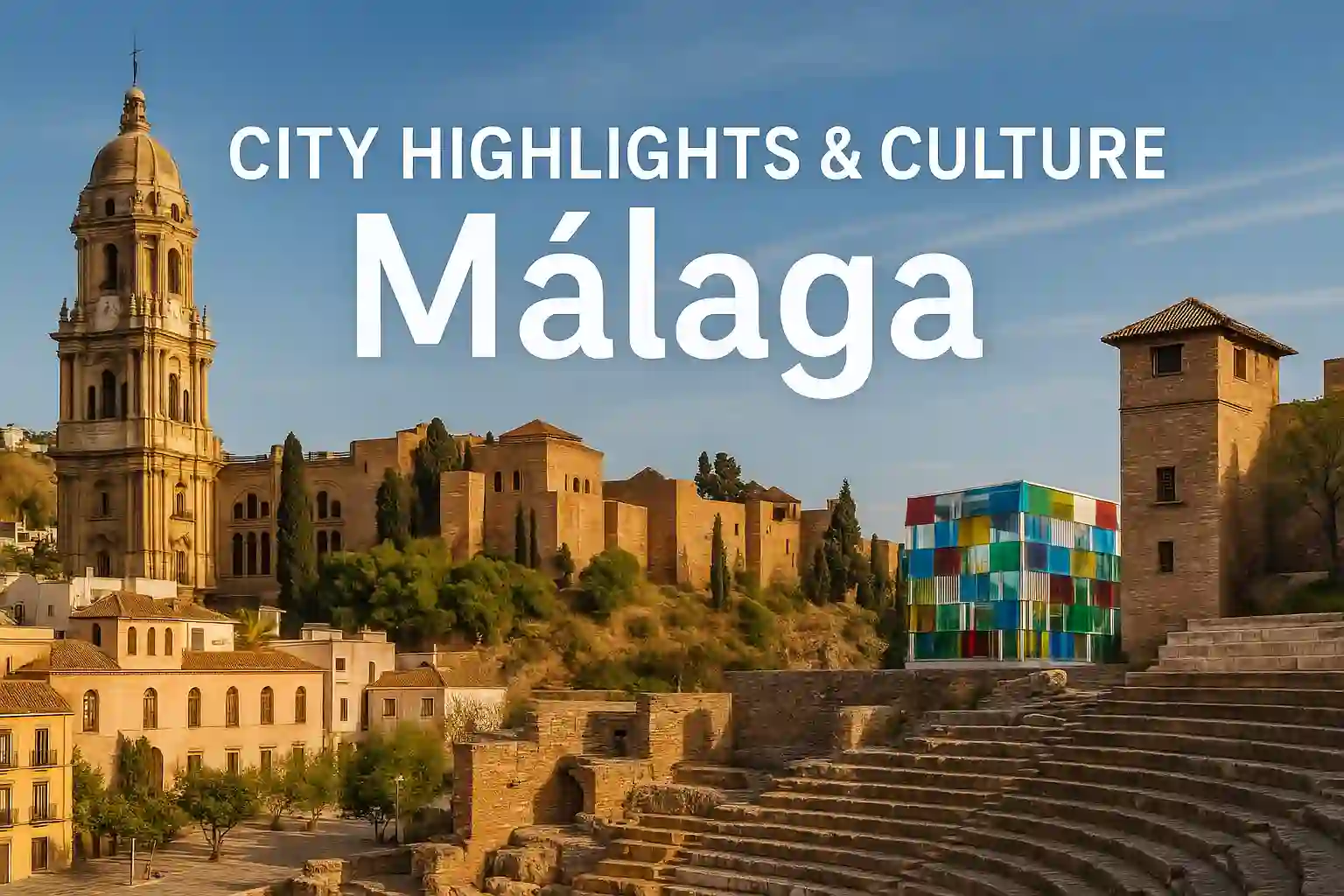Málaga City Highlights & Culture – Essentials, Routes & Live Experiences

Quick Picks for a Culture-First Day
- Start: Walk the Roman Theatre forecourt and enter the Alcazaba through shaded courtyards and view terraces. Pace yourself — this is where Málaga’s layered past is most tangible.
- Midday: Old-town coffee near Plaza de la Merced, then the Picasso Museum for a clear arc from early studies to late experiments.
- Evening: Reserve a flamenco tablao. Small venues amplify cante and guitar; arrive 15–20 minutes early to settle in.
- Keep it simple: Three anchors (Alcazaba → Picasso → Flamenco) with gentle walks, shaded pauses, and a golden-hour detour through cathedral streets.
Self-Guided Route (3–6 hours)
- Roman Theatre → Alcazaba · Enter via the lower gardens; linger at water features and lookout points. Photos work best from corners rather than centerlines.
- Old-Town Loop · From Calle Alcazabilla into narrow lanes, peek into patios, and drift toward Plaza de la Merced.
- Picasso Focus · One hour is enough for a first pass. Note recurring motifs; save the shop for last to avoid carrying items.
- Late Afternoon Light · Cathedral facades and side-streets glow after 6 pm; this is your calm photo window.
- Flamenco Night · Sit close enough to feel the footwork, far enough to see the whole cuadro. Silence phones completely.
- Optional · Gelato on Calle Larios or a sea breeze detour along the palm-lined park toward the port.
Insider Tips
- Heat rhythm: Explore hill sections earlier; save museums for midday.
- Shoes: Mixed stone surfaces — lightweight, grippy soles beat sandals for the Alcazaba.
- Photos: For people-free shots, arrive at the Roman Theatre shortly after opening; return at blue hour for warm stone tones.
- Flamenco etiquette: Applaud between numbers (palmas), avoid flash, and keep conversation for interludes.
Why Málaga Works for Culture
Distances are short, contrasts are strong: Moorish fortifications, Roman remains, Renaissance facades and modern galleries sit within an unhurried, sea-breezed grid. One day gives you a taste; two to three days let you spread museum time, add markets, and fit a coastal walk at sunrise or dusk.
Suggested 1-Day Plan
Morning · Alcazaba & Roman Theatre
Enter with fresh light and fewer visitors; follow upper terraces for layered city-sea views.
Midday · Plaza de la Merced & Picasso
Coffee break, then museum hour. Track themes across rooms rather than checking every label.
Evening · Cathedral Streets & Flamenco
Golden-hour walk past the cathedral, dinner nearby, then your tablao reservation. End with a short port stroll.
Frequently Asked Questions
Is the Alcazaba steep?
There are gentle climbs and stone steps. Go early, wear supportive shoes, and use shaded pauses — views repay the effort.
How long for the Picasso Museum?
Plan ~60–90 minutes for a first visit. Save the shop for last; weekends are busier — earlier entries feel calmer.
Do I need to book flamenco in advance?
Small venues fill quickly, especially on weekends. Reserve a day or two ahead and arrive 15–20 minutes before showtime.
Where should I base myself?
Old town works for walking culture days; the port area adds evening breeze walks. Both connect easily to the cathedral and museums.
What if it’s very hot?
Flip your plan: museums at midday, Alcazaba early or after 6 pm, and short shaded breaks between segments.
Powered by GetYourGuide
